-
 Bitcoin
Bitcoin $118400
0.47% -
 Ethereum
Ethereum $3836
2.20% -
 XRP
XRP $3.157
2.98% -
 Tether USDt
Tether USDt $0.9999
-0.03% -
 BNB
BNB $801.5
1.31% -
 Solana
Solana $180.9
2.07% -
 USDC
USDC $0.9999
-0.02% -
 Dogecoin
Dogecoin $0.2225
2.50% -
 TRON
TRON $0.3285
-1.02% -
 Cardano
Cardano $0.7789
2.60% -
 Hyperliquid
Hyperliquid $43.60
2.39% -
 Sui
Sui $3.892
4.41% -
 Stellar
Stellar $0.4229
3.34% -
 Chainlink
Chainlink $18.01
3.98% -
 Hedera
Hedera $0.2745
6.77% -
 Bitcoin Cash
Bitcoin Cash $582.3
3.38% -
 Avalanche
Avalanche $23.77
1.04% -
 Ethena USDe
Ethena USDe $1.001
0.01% -
 Toncoin
Toncoin $3.493
3.59% -
 Litecoin
Litecoin $110.0
2.48% -
 UNUS SED LEO
UNUS SED LEO $8.936
-0.37% -
 Shiba Inu
Shiba Inu $0.00001304
2.49% -
 Uniswap
Uniswap $9.999
1.09% -
 Polkadot
Polkadot $3.897
3.26% -
 Monero
Monero $308.6
-0.83% -
 Dai
Dai $0.9999
-0.01% -
 Bitget Token
Bitget Token $4.504
-0.04% -
 Pepe
Pepe $0.00001154
2.95% -
 Cronos
Cronos $0.1471
3.06% -
 Ethena
Ethena $0.6691
19.53%
How to interpret the moving averages being arranged in a short position but the K-line closing positive continuously?
A bearish moving average setup with repeated positive K-line closes suggests potential reversal—monitor volume and key levels to confirm shift in momentum.
Jul 29, 2025 at 06:28 pm
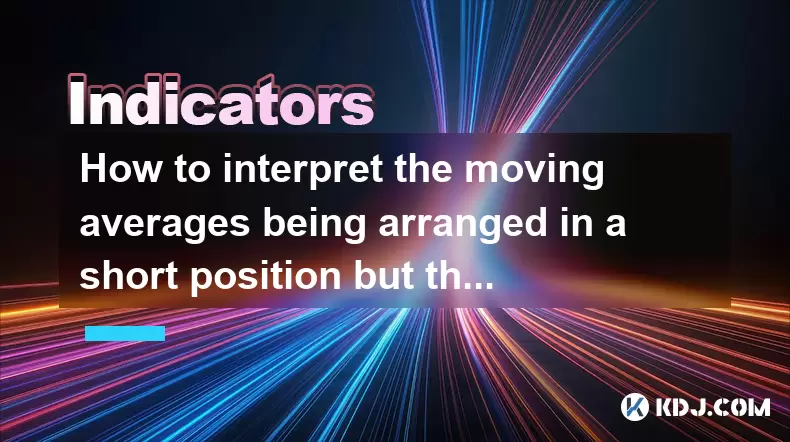
Understanding the Concept of Moving Averages in a Short Position Arrangement
When traders refer to moving averages being arranged in a short position, they are describing a bearish alignment of multiple moving average lines on a price chart. This typically occurs when shorter-term moving averages—such as the 5-day, 10-day, or 20-day—sit below longer-term moving averages like the 50-day or 200-day. This downward stacking is commonly known as a death cross or bearish crossover, signaling that recent price momentum is weakening compared to historical averages.
The arrangement implies that the market sentiment is tilted toward selling pressure, and many technical analysts interpret this as a signal for potential continued downward movement. However, this setup does not guarantee that prices will fall immediately. Market conditions can shift rapidly, especially in the volatile cryptocurrency space, where whipsaws and false signals are frequent. Therefore, even with a short-positioned moving average structure, traders must remain cautious and analyze additional indicators.
What Does a Continuously Positive K-Line Close Indicate?
A positive K-line close means that the closing price of a given trading period (hourly, daily, etc.) is higher than the opening price, resulting in a bullish candlestick. When this happens repeatedly, it suggests that buyers are consistently stepping in by the end of each session, absorbing selling pressure and pushing prices upward. In technical analysis, a series of green (or white) candles reflects accumulation or short-covering activity.
In the context of cryptocurrencies, such as Bitcoin or Ethereum, sustained positive closes may occur during periods of market recovery, news-driven rallies, or institutional inflows. Even if the broader moving average structure remains bearish, these repeated bullish closes can indicate a shift in short-term momentum. Traders should pay attention to the volume accompanying these candles, as high volume on green candles strengthens the validity of the bullish signal.
Reconciling Conflicting Signals: Bearish MA vs. Bullish K-Lines
The apparent contradiction between a bearish moving average arrangement and repeated positive K-line closes is not uncommon in crypto trading. This scenario often arises during transitional market phases, such as the early stages of a trend reversal or a consolidation period after a prolonged downtrend.
To interpret this properly, consider the following:
- The moving averages reflect lagging data, meaning they are based on past prices and may not immediately respond to sudden shifts in sentiment.
- K-line patterns, especially candlestick bodies and wicks, provide real-time behavioral insights into market psychology.
- A series of higher lows and higher closes amidst a bearish MA structure could indicate that buyers are gaining control, potentially setting the stage for a crossover reversal.
Traders should not rely solely on one indicator. Instead, they must assess whether the positive closes are forming a higher low structure, breaking key resistance levels, or occurring with increasing volume—all of which can validate a potential shift in trend.
Step-by-Step Analysis to Confirm the Signal Divergence
To properly analyze this conflicting scenario, follow these steps:
- Plot multiple moving averages on your chart (e.g., 5, 10, 20, 50, and 200-period MAs) using a platform like TradingView or Binance.
- Confirm that the shorter MAs are positioned below the longer ones, indicating the bearish arrangement.
- Observe the last 5 to 10 K-lines and verify that the closing price is consistently above the opening price.
- Check the volume profile for each positive close—rising volume confirms stronger buyer participation.
- Look for rejection of lower prices—if wicks appear on the bottom of the candles, it shows sellers are being overwhelmed.
- Identify any key support levels being defended, such as previous swing lows or Fibonacci retracement zones.
- Monitor for MACD or RSI divergence—bullish divergence (price making lower lows while RSI makes higher lows) supports a reversal possibility.
This detailed inspection helps determine whether the positive K-line action is a temporary bounce or the beginning of a meaningful trend change.
Practical Trading Strategy in This Scenario
When faced with this mixed signal, a prudent approach involves position sizing and risk management rather than aggressive directional bets. Consider the following strategy:
- Avoid shorting based solely on the bearish MA stack, as the market may be reversing.
- Enter long positions cautiously using limit orders near support levels confirmed by the recent K-line action.
- Set tight stop-loss orders below the lowest point of the recent bullish candles to limit downside risk.
- Use trailing stops if the price continues to rise, protecting profits while allowing room for upside.
- Scale in gradually—allocate only a portion of your capital initially and add more if the MA alignment begins to shift upward.
- Watch for a golden cross (shorter MA crossing above longer MA) as confirmation of trend reversal.
Platforms like Bybit or KuCoin allow for precise order execution and leverage adjustments, which can be useful in volatile conditions.
Common Misinterpretations and How to Avoid Them
One common mistake is assuming that a bearish MA arrangement guarantees further price decline. This ignores the dynamic nature of crypto markets, where sentiment can shift due to on-chain activity, whale movements, or macroeconomic news. Another error is treating every positive K-line as a buy signal without verifying volume or context.
To avoid false conclusions:
- Do not ignore order book depth—a lack of sell walls can enable rapid price increases even in bearish structures.
- Be cautious of low-volume rallies, which may lack sustainability.
- Cross-verify with on-chain metrics like exchange outflows or active addresses, available via Glassnode or Santiment.
- Recognize that mean reversion strategies may fail during strong momentum phases.
Frequently Asked Questions
Can moving averages become bullish again after a short-position arrangement?
Yes. When shorter-term moving averages begin to rise and cross above longer-term ones, the structure shifts from bearish to bullish. This process often starts with a flattening of the MAs followed by a definitive upward crossover, especially when supported by strong volume and closing prices.
Does a positive K-line always mean buyers are in control?
Not necessarily. A positive close with low volume or a long upper wick may indicate that buyers pushed price up temporarily but faced strong resistance. The presence of large wicks suggests rejection at higher levels, which can precede a pullback.
How long should I wait before confirming a trend reversal in this case?
There is no fixed timeframe. Traders typically wait for three to five consecutive higher closes with increasing volume and a break above a key moving average (e.g., the 50-day MA). Confirmation improves when the price holds above that level for multiple periods.
Should I use exponential moving averages (EMA) or simple moving averages (SMA) in this analysis?
EMA is generally preferred in crypto due to its sensitivity to recent price changes, making it more responsive to sudden reversals. SMA, while smoother, may lag significantly, delaying signal recognition in fast-moving markets.
Disclaimer:info@kdj.com
The information provided is not trading advice. kdj.com does not assume any responsibility for any investments made based on the information provided in this article. Cryptocurrencies are highly volatile and it is highly recommended that you invest with caution after thorough research!
If you believe that the content used on this website infringes your copyright, please contact us immediately (info@kdj.com) and we will delete it promptly.
- Pudgy Penguins Price Prediction: Buying Opportunity or Insider Dump?
- 2025-07-31 18:50:35
- Penny Coin Power: Unearthing 20x Potential in Undervalued Crypto
- 2025-07-31 20:10:14
- Shrapnel, GalaChain, and China Gaming: A New Frontier
- 2025-07-31 19:10:35
- Mutuum Finance, Bitcoin, and Market Analysis: Decoding the Latest Trends
- 2025-07-31 19:30:13
- Dogecoin Howl: Bullish Signals and Analyst Bites – Is the Meme Coin Ready to Pounce?
- 2025-07-31 18:30:16
- Decoding Crypto Presales, Ethereum's Role, and Navigating a Tricky Altcoin Season
- 2025-07-31 18:30:16
Related knowledge
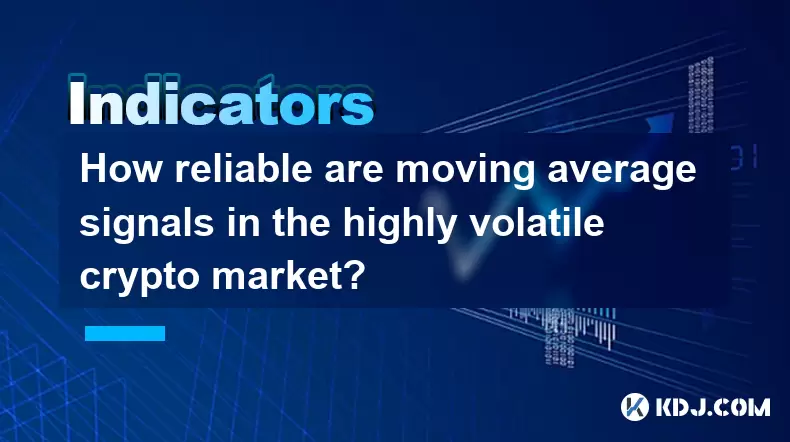
How reliable are moving average signals in the highly volatile crypto market?
Jul 31,2025 at 08:36pm
Understanding Moving Averages in Cryptocurrency TradingMoving averages (MAs) are among the most widely used technical indicators in the cryptocurrency...
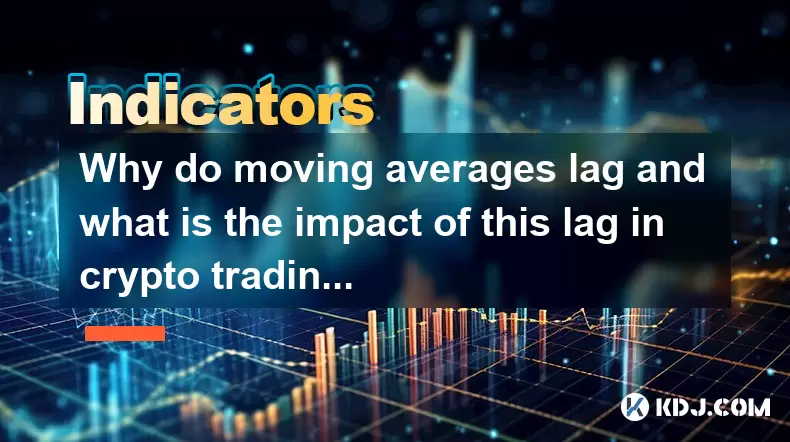
Why do moving averages lag and what is the impact of this lag in crypto trading?
Jul 31,2025 at 08:07pm
Understanding the Concept of Moving Averages in Crypto TradingMoving averages are among the most widely used technical indicators in cryptocurrency tr...
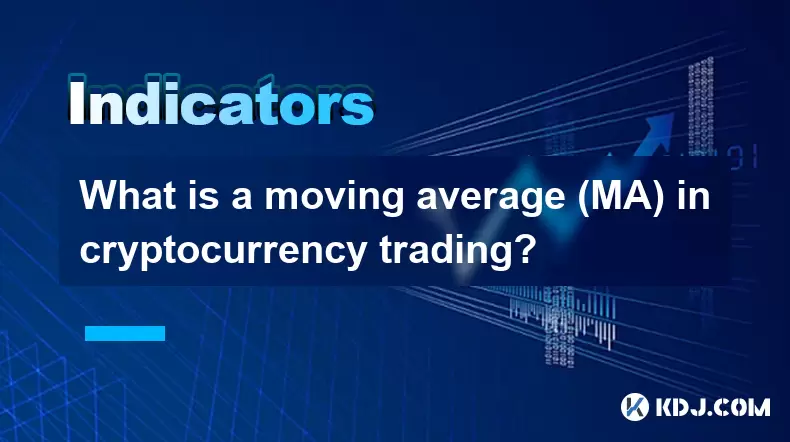
What is a moving average (MA) in cryptocurrency trading?
Jul 31,2025 at 06:30pm
Understanding the Concept of Moving Average (MA)A moving average (MA) is a widely used technical analysis tool in cryptocurrency trading that helps sm...
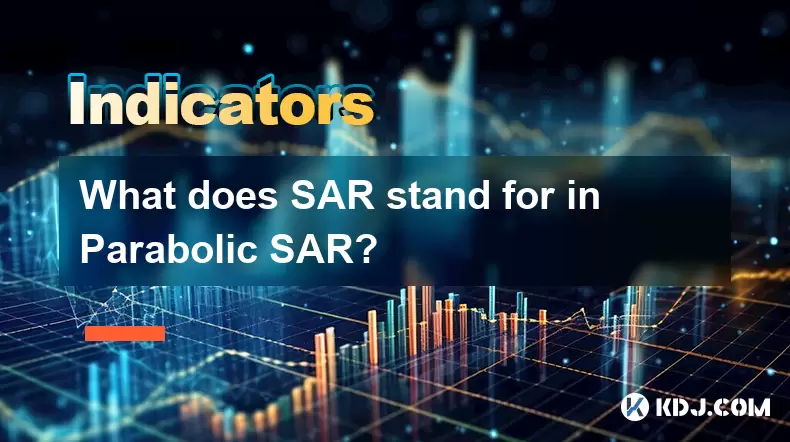
What does SAR stand for in Parabolic SAR?
Jul 31,2025 at 06:49pm
Understanding the Meaning of SAR in Parabolic SARIn the context of technical analysis in the cryptocurrency market, SAR stands for 'Stop and Reverse' ...
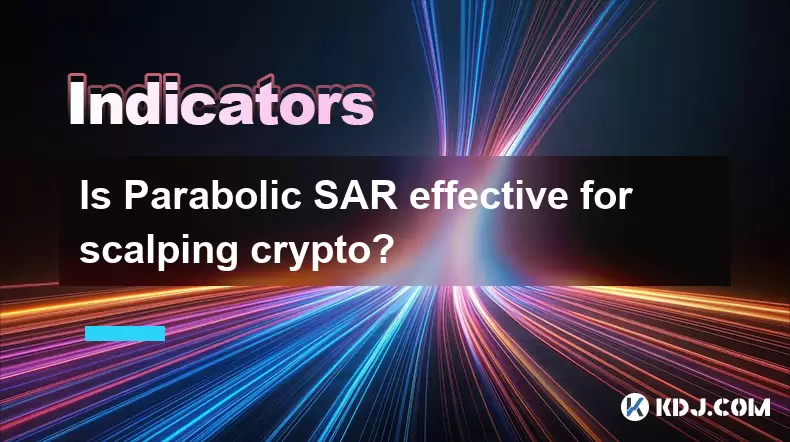
Is Parabolic SAR effective for scalping crypto?
Jul 31,2025 at 08:29pm
Understanding Parabolic SAR in Cryptocurrency TradingThe Parabolic SAR (Stop and Reverse) is a technical indicator developed by J. Welles Wilder, prim...
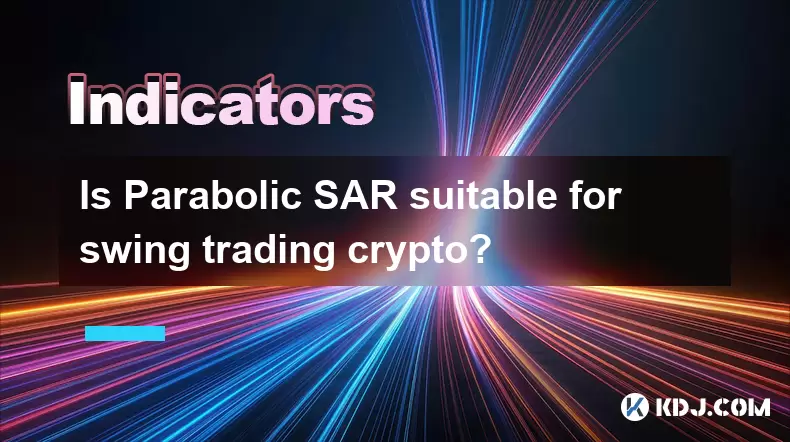
Is Parabolic SAR suitable for swing trading crypto?
Jul 31,2025 at 05:29pm
Understanding Parabolic SAR in Cryptocurrency TradingThe Parabolic SAR (Stop and Reverse) is a technical indicator developed by J. Welles Wilder that ...

How reliable are moving average signals in the highly volatile crypto market?
Jul 31,2025 at 08:36pm
Understanding Moving Averages in Cryptocurrency TradingMoving averages (MAs) are among the most widely used technical indicators in the cryptocurrency...

Why do moving averages lag and what is the impact of this lag in crypto trading?
Jul 31,2025 at 08:07pm
Understanding the Concept of Moving Averages in Crypto TradingMoving averages are among the most widely used technical indicators in cryptocurrency tr...

What is a moving average (MA) in cryptocurrency trading?
Jul 31,2025 at 06:30pm
Understanding the Concept of Moving Average (MA)A moving average (MA) is a widely used technical analysis tool in cryptocurrency trading that helps sm...

What does SAR stand for in Parabolic SAR?
Jul 31,2025 at 06:49pm
Understanding the Meaning of SAR in Parabolic SARIn the context of technical analysis in the cryptocurrency market, SAR stands for 'Stop and Reverse' ...

Is Parabolic SAR effective for scalping crypto?
Jul 31,2025 at 08:29pm
Understanding Parabolic SAR in Cryptocurrency TradingThe Parabolic SAR (Stop and Reverse) is a technical indicator developed by J. Welles Wilder, prim...

Is Parabolic SAR suitable for swing trading crypto?
Jul 31,2025 at 05:29pm
Understanding Parabolic SAR in Cryptocurrency TradingThe Parabolic SAR (Stop and Reverse) is a technical indicator developed by J. Welles Wilder that ...
See all articles

























































































